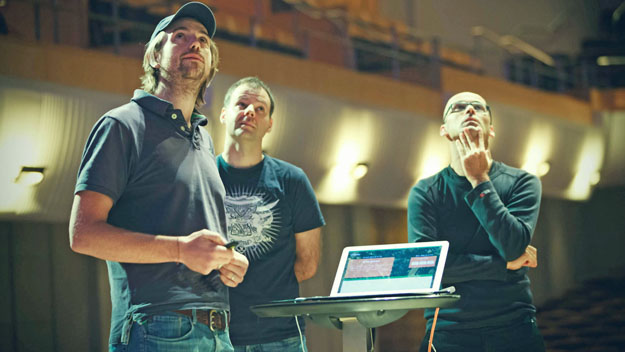
Australia’s biggest global startup success story has a simple mission: to unleash the power of teams in companies around the world.
Following a $8 billion public listing on the NASDAQ and the release of its first annual financial results since the IPO, the Sydney-founded company has now revealed some of its internal secrets to building strong and effective teams.
In a blog post on the Atlassian website, the company details how other businesses can draw on the “strengths of the individual to unleash the power of teams”.
“Good teams are made up of individuals with distinct strengths that collectively drive teamwork forward,” the post says.
Make time for “deep work”
According to the post, the average worker spends 11 minutes working before becoming distracted, and can only last three minutes on a project before switching tasks.
To ensure that works can focus on “deep work”, time needs to be allotted for this and protected.
“Carve out uninterrupted time to get in the zone,” the post says.
“This is harder than you might think.
“Know where you work best – 76% of people avoid the office when they need to get important work done.”
Avoid the time-sucks
Regularly checking emails can be the biggest drain on a company’s employees’ time.
“Checking email and attending meetings is part of being an engaged team member, but these activities are eating up too much time,” the post says.
To combat these, Atlassian recommends designating “email windows” three times a day in order to “alleviate stress and maximise personal productivity”, and use collaborative software to avoid unnecessary meetings.
Be present with your team
Although draining a lot of time, meetings are still crucial to a team’s success if they’re done right.
“Meetings aren’t the enemy,” the post says.
“They can be valuable forums for teams to build off the collective genius. The problem is, people are too distracted during meetings.”
In meetings, team members should close their laptops, and if they aren’t present, should video-call in.
“It’s not just about team productivity. Being a focused, engaged and contributing team member is also good for your career.
“It’s the combination of every individual’s unique skills that makes teams truly great.”
The health monitor
In another blog post, Atlassian head of research and development Dominic Price reveals a technique used internally at the company that has proved highly effective.
“We’ve all worked on project teams that don’t function like they should, and that’s a bummer,” Price writes.
“We all want to be able to do the best work of our lives every single day. We want each member of our project team to feel both full of purpose and unimpeded.
“What started as one team’s system for keeping our projects healthy has spread through Atlasian, and now we want to share it with the world.”
The health monitor technique involves scheduling regular checkpoints that assess the health of the team and the project, and which are continually revisited.
“When you’re already neck-deep in a project it’s easy to get lost in the daily grind and nitty-gritty details and lose touch with the larger picture,” Price says.
“We forget that each team member’s experience on the project is a little different, as are their needs and objectives. That’s why it’s so important to schedule checkpoints: a project’s health hinges on whether the project team itself is thriving.”
Price’s post concludes with eight key attributes that define a successful project team.
- Full-time owner: Someone who is accountable for the overall project and is at least 80% dedicated to it.
- Balance: Has clear and agreed upon roles and responsibilities
- Shared understanding: Each team member knows why they’re there, what the problem is and how to solve it
- Values and metrics: Each team member knows what success in the project means
- End-to-end demo: The project can be demonstrated, created and tested
- ReadMe: The project can be summarised in one page
- Dependencies: Each team members knows the level of complexity and the risks involved
- Velocity: The project makes incremental progress and iterations
Follow StartupSmart on Facebook, Twitter, LinkedIn and SoundCloud.
COMMENTS
SmartCompany is committed to hosting lively discussions. Help us keep the conversation useful, interesting and welcoming. We aim to publish comments quickly in the interest of promoting robust conversation, but we’re a small team and we deploy filters to protect against legal risk. Occasionally your comment may be held up while it is being reviewed, but we’re working as fast as we can to keep the conversation rolling.
The SmartCompany comment section is members-only content. Please subscribe to leave a comment.
The SmartCompany comment section is members-only content. Please login to leave a comment.